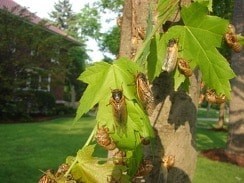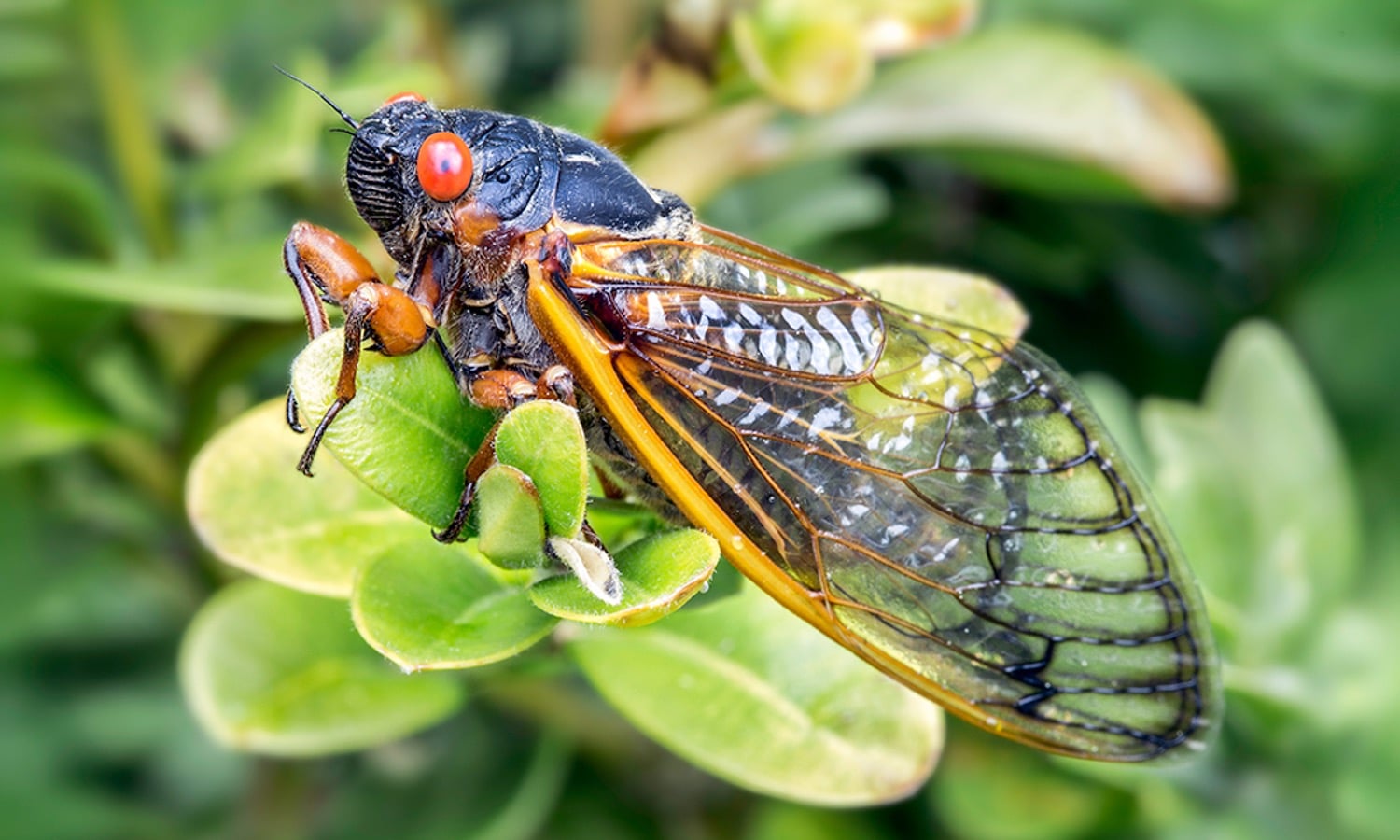Over the course of the next few weeks, several areas will experience every entomologists’ dream – the periodical arrival of billions, maybe even trillions, of bugs emerging from beneath the ground almost simultaneously. While the Chicagoland area is unlikely to see Brood X Cicadas – pronounced Brood 10 – regions in the mid-west, including Indiana and Ohio, and parts of the east coast will see large concentrations. Brood X cicadas are expected to make their long-awaited debut in those regions after seventeen years of feeding off tree roots!
When Are They Coming & When Will They Leave?
This brood has been silently rummaging around underground for 17 years, waiting to emerge. We’ve seen four presidents, dozens of hurricanes, a total solar eclipse, and the rise and fall of several social media platforms since the last time this brood of red-eyed bugs were last seen. While some might be eager to meet this brood, they will wait until the soil temperature at about a foot below ground is around 64 degrees. This is typically in May when the irises are blooming. Once they emerge, they will molt one last time into soft, white adults. Within a few hours they will take on full color, and then within a few days, they will be able to fly. Spending nearly all of their adult life eating and trying to mate, adult cicadas only spend about two to four weeks aboveground.

Characteristics Of Brood X Cicadas
This remarkable group of cicada species is the largest of fifteen broods of periodical cicadas. These cicadas measure approximately one inch in length, with red eyes bright enough to scare the socks off anyone unfamiliar with this strange insect. While different insects utilize different survival strategies, their superpower lies in their vast numbers. These numbers serve to overwhelm their natural predators, filling their bellies while still having enough of a population left to perpetuate the species. Experts indicate that up to 1.5 million cicadas can surface per acre or 34 cicadas per square foot!! While it’s unlikely that we will see numbers like that in our area, that’s still quite an appearance!
To top it off, Brood X males are the largest choir ever known to exist. You won’t escape their high-pitch call for a mate, and since there will be more cicadas than you can imagine, the sound can be overwhelming. Their mating call can reach a staggering 105 decibels, which’s as loud as a lawnmower or motorcycle!! Not to mention, after cicadas procreate, their brown shells and their bodies will blanket the landscape and can produce a putrid smell like “death.”
Are Cicadas Harmful?
But there is no need to fear. Aside from their deafening calls for a mate and the fact that you can’t avoid them, Brood X Cicadas are of little to no harm to you, your pets, flowers, or crops. Cicadas don’t have a stinger or bite and couldn’t care less about people. They utilize their straw-like beak to extract the nutrients they need from the tree’s xylem. Inside is a watery sap full of minerals and amino acids to fuel the cicadas while trying to find a mate.
Protect Delicate Trees
The only thing they pose a threat to our delicate and young trees. That’s because, after mating, female cicadas make tiny slits into thin branches, preferring those ¼ – ½ of an inch in diameter and lay their eggs. Established trees should weather this process fine, but some branch tips could wither and show die-back. Later those eggs will hatch, the nymphs will fall to the ground and begin burrowing beneath the earth to start yet another 17-year cycle.

This process can be damaging to ornamental trees or trees planted within the past 3-5 years. The good news is that there are options available to help you protect vulnerable trees. The first step is to remember to check on your plants regularly. Only put a plan into action if it’s needed. If you do need to act to protect your plants, you should also be sure that you are responding appropriately. Focus on the affected plants on your property to avoid utilizing resources on safe and healthy plants.
Damage Control
So what are your options when you do have vulnerable plants that are being damaged? The best and simplest option is to cover them with ½” netting. This prevents the insects from getting to the sensitive plant material and can be removed when the cicadas are gone. If you don’t want to put a net on your sensitive plants, you can choose to utilize pesticides. Traditional insecticides are readily available but can be harmful to our pollinators. A better option, that is non-toxic while still being effective, is Neem oil. Keep in mind that due to the potentially large number of cicadas – you might need to spray every 3-4 days to prevent injury or every 7- 10 days to reduce injury. No matter what pesticide you use, it’s best to apply them in the morning. Avoid applying at dusk to minimize pollinator’s exposure.
Not a Fan of Creepy Crawly Things?
The good news is that Brood X will make their exit almost as quickly as they make their entry. They’ll be hanging around for about four to six weeks. If insects are your thing, you will have plenty of time to encounter one of nature’s extraordinary events! Either way, if you live where there are numerous trees, your landscape might even receive some complimentary aeration.










